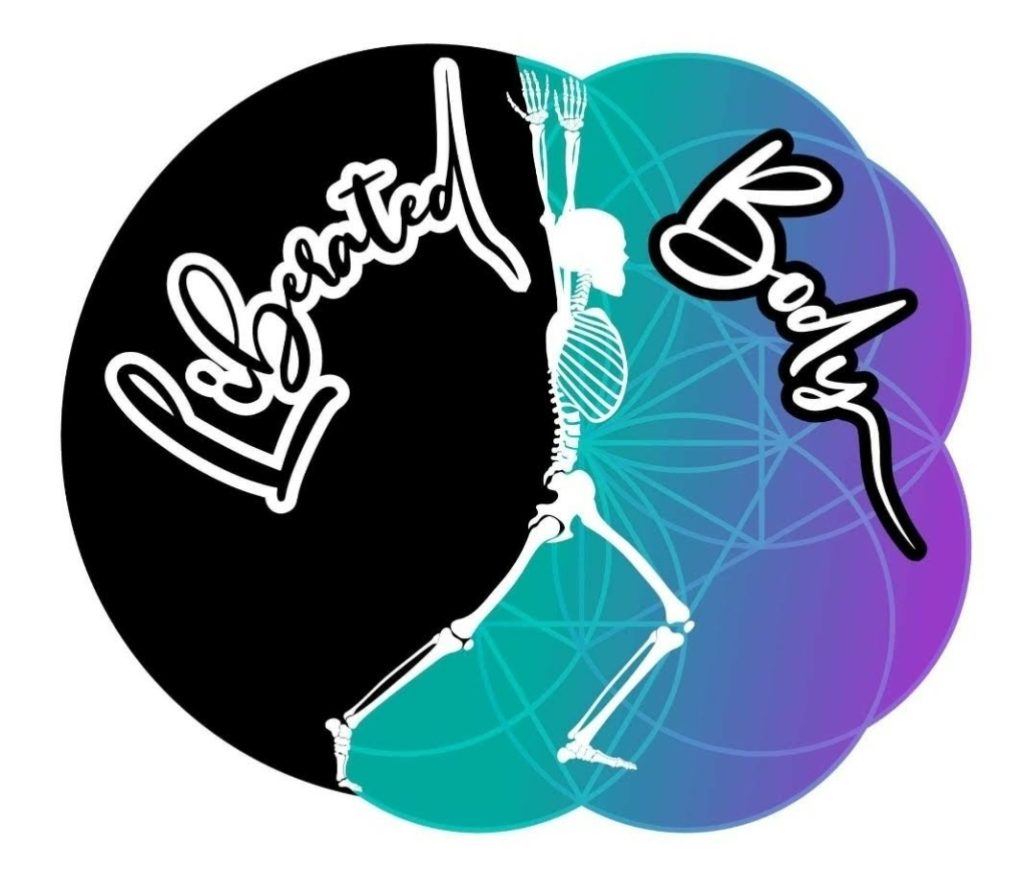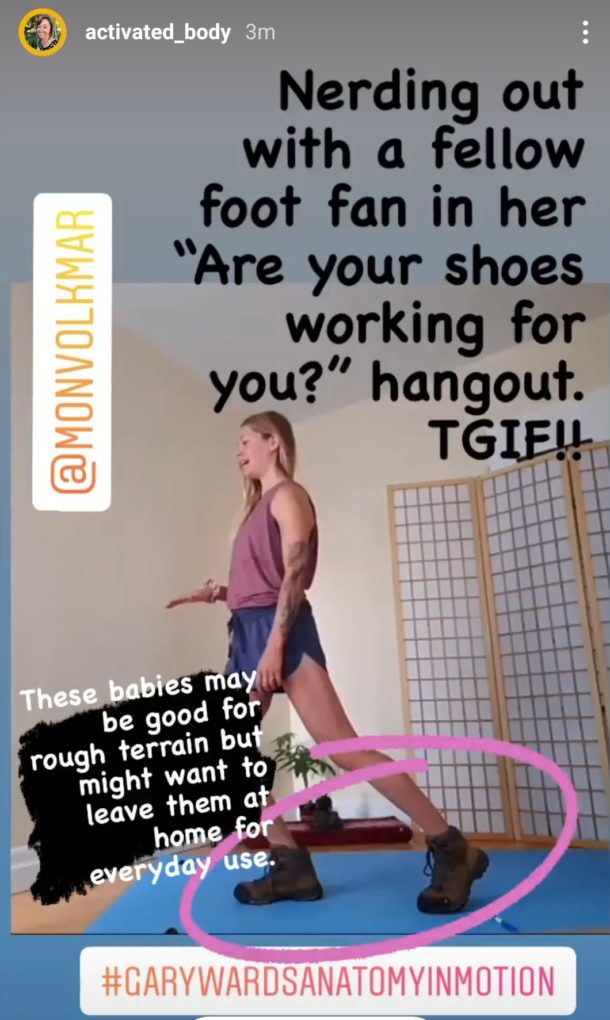Have you ever had an ankle sprain?

That’s a silly question… If you’re a human, your answer is most proabably yes.
If you’re a dancer, like I am currently having an identity crisis about, statistically, ankle sprains are one of the most common injuries.
The problem is that most of us disregard our past ankle sprains as being unimportant and unrelated to any of our current aches, pains, and chronic niggles.
And then our bodies woes become this mystrious thing, a senseless cascade of symptoms of source unknown.
I work with a lot of folks in this situation, and I often see the impact of an an old, forgotten, ignored ankle sprain, on their body’s current state.
The way their body is moving now has become their solution. Their current set of movement options is an adaptive strategy in response to that sprain.
Could this be you? (chances are likely, yes)
How do you know if your old ankle sprian is still messing with you, and what can you do about it?
You can totally figure this out…
On one condition: You’ve got to stop trying random shit you found on Youtube and instead, find a system to investigate your ankle/body as objectively as possible.
I’ve been blessed to have been shown such a system, and I want to share it with you, step by step. And it’s not rocet surgery.
You can become your own ankle sprain whisperer.
But first, there’s a bit of background info to get familiar with, so I made a little three part video series (all the clips are from my most recent Liberated Body Movement Deep Dive session, called: The Ankle Sprain Retrospective)
Ankle Sprain Whispering: The Preliminary Theory
I love those two words together: “Preliminary theory”. Feels so sophisticated, doesn’t it?
This first video describes why it is important to consider how an old, forgotten ankle sprain could be messing with other distant parts of your body.
There is a system you can use to determine how many other issues your ankle sprain may be linked to (and I’m going to share that system, just a little farther along. Oh how I love a good system, don’t you?!).
So if your neck feels restricted, and 5 years of neck stretching hasn’t helped, should you keep doing those streteches? Or is it time to get curious about the real source of that neck issue? Is your neck being affected by your ankle?
We can totally figure this out!
6 Important Considerations for Ankle Sprain Significance
Video two is to help you consider how significant that ankle sprain was, so you can truly give it the time and attention it needs.
Most people under-appreciate the impact of an injury, because while their minds may have forgotten it, their bodies still remember.
This next video outlines a few important considerations to develop an appreciation for the amount of time, attention, and care that old sprain might need now, so we can move forwards and heal appropriately.
*NOTE my audio turned off as I was speaking about the first consideration (tbh I actually dropped my phone in my toilet right before recording the session… Guys, you don’t need your phone in the bathoroom with you. Learn from my mistakes!), so the video begins at #2.
Not on the video, consideration one is,“How old were you at the time of injury?”. Consider that the younger you were when the sprain happened might make it more significant, not less. THis goes against how we usually think.
Consider that 20 years of adaptation and habit formation around that sprain is more impactful than one year. Just because you were young and you healed, doesn’t mean it didn’t have a significant effect on your body to this day.
The 6 considerations in a nutshell:
- How old were you at the time? *see note above
- What was your emotional/nervous system state?
- Did it cause you to cease activity for a period of time, and did you respect that?
- Did you receive the appropriate rehabilitation or complete care needed at the time?
- Did you personally, or other authority figures take it seriously or did you ignore it and push through it??
- Did any new symptoms, of unknown cause, at other parts of your body pop up weeks, months, or even years after the ankle sprain?
And then a little rant about the standard medical system and how it so often dismisses us when doctors don’t have answers. All too common…
The Ankle Sprain Whispering System
Ok, now let’s look at a practical system we can use to rule in or out any suspisions about how and what that old ankle sprain is affecting.
This system is based on the Anatomy in Motion check-in process, which is a self-assessment of the motions your body should be able to do during gait. In AiM philosophy and practice, we think of gait as:
a. One of the most objective movement assessment tools we have
and,
b. A highly meaningful context to reintroduce missing movements to restore effiency and ease to the body
To be honest, I didn’t assess myself prior to recording the session, so I had no expectations, and I was quite surprised to find that my left ankle was affecting my left shoulder and neck range of motion. Well shit! Didn’t know that until I checkd in…
Give yourself about 20 minutes to participate in the “Ankle Sprain Whispering Check-in System” (patent pending… jk, this is not my work, it’s adapted from the teachings of Gary Ward and Chris Sritharan, through my AiM studies, and I consider it to be a necessary chapter of the “how to have a human body user’s manual”, so please share far and wide).
The Ankle Sprain Whispering System steps:
- Check in with your baseline mechanics. We want to know:
– Where is your center of mass resting ( based on your foot pressures)?
– Which leg do you trust/not trust to stand on?
– What is the current movement potential of your body telling you about which leg you like to stand on more (pelvis shifts, rotations, stepping forwards)?
– Does your ankle have its full set of movement options? - Manipulate ankle variables (the towel “hug”, inversion, and eversion) to determine what else in your body is being affected by your ankle’s current state. Do your mechanics improve when your foot is more everted? More inverted? When “give it a hug”?
Simple.
What did you find? I’d love to hear.
What do you do with the data?
So maybe you found, like me, that your body has some unresolved issues with your old ankle sprain, and now you’re wondering, what do you do about it?
We want to restore movement options at your foot and ankle so that it can be an independednt, self-actualized body part, no longer interfering with mechanics above. Only when your ankle can know itself and its potential can it then be re-integrated with the whole body, in harmonious relationship.
Restoring missing movement options to a locked down, or hypremobile ankle will help it continue and/or complete its healing process, thereby not needing another part of the body to make up for its loss of options.
We also want to ensure that other parts of your body no longer have to make up for a lack of motion below. For example, if you’re like me and your left humerus external rotation is affected by your left ankle, I also want to do some work on restoring some missing movement to my humerus.
In a nutshell: Can your foot ankle pronate and supinate? Dorsiflex and plantar flex?
If you give these movements back to your system, then re-check with your body’s mechanics, you just might find that your neck problem, at its root, was really more the result of an ankle problem.
That’s what it means to be an ankle sprain whisperer: You are fluent in speaking, listening, and interpreting your body’s language.
How do I restore movement options?
Restoring movement options should also be done in the context of a system (I reallllly love systems because I’m super lazy), and therfore I hesitate to share specific exercises out of context, as they may become yet another random thing someone finds on Youtube and misinterprets.
So if you want to learn more, get the context, and get the system to make the exercises effective, I’m going to invite you to join my next Liberated Body online workshop, in which I share allll the things.
The next one is coming up on Sept 19th 2020, and registration is now open 🙂
In Liberated Body, I make understanding the complexity of gait mechanics simple for anyone, regardless of your background in movement and anatomy, so you can get results with it.
We cover your whole body’s movement mechanics based on its original instructions for the walking cycle. Day two is where we cover foot and ankle mechanics.
It’s a lovely experiential study of your anatomy to troubleshoot why your body feels the way it does, and find strategies to make it feel better, move with less pain, and do all of the things you love with more ease.
Shoot me an email if you want to chat more and learn if this workshop is a good fit for you right now 🙂 Or if you’re ready to register right now, sign up here.
How good of an ankle sprain whisperer are you?
How did that process go for you? Did you discover anything new?
I didn’t even know my left ankle was related to my lef arm until I recorded that session! Crazy! There’s so much to explore…
I’d love to hear what you found. Write a comment below or send me an email about your experience with this ankle sprain business.
You CAN be your own Ankle Sprain Whisperer!
All the best with your ongoing movement explorations 🙂
Want to explore this nerdy stuff with me live every month?
You should join one of my free monthly Movement Nerd Hangouts. See the full topic schedule here, and sign up below so that I can email you when registration opens for the next hangout 🙂




1 thought on “You Can Become an Ankle Sprain Whisperer”